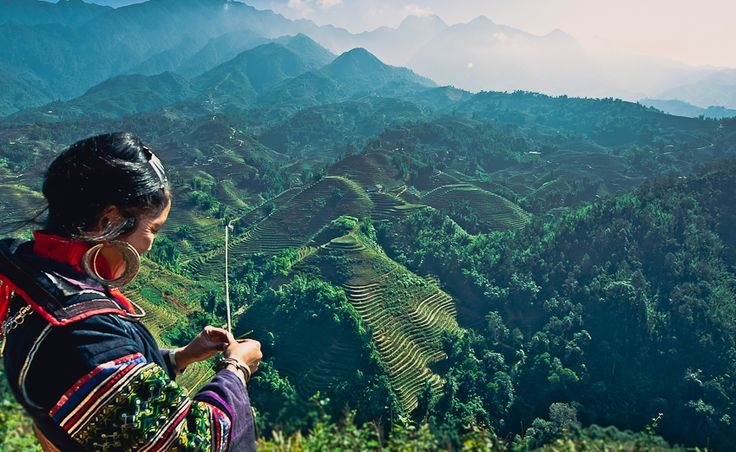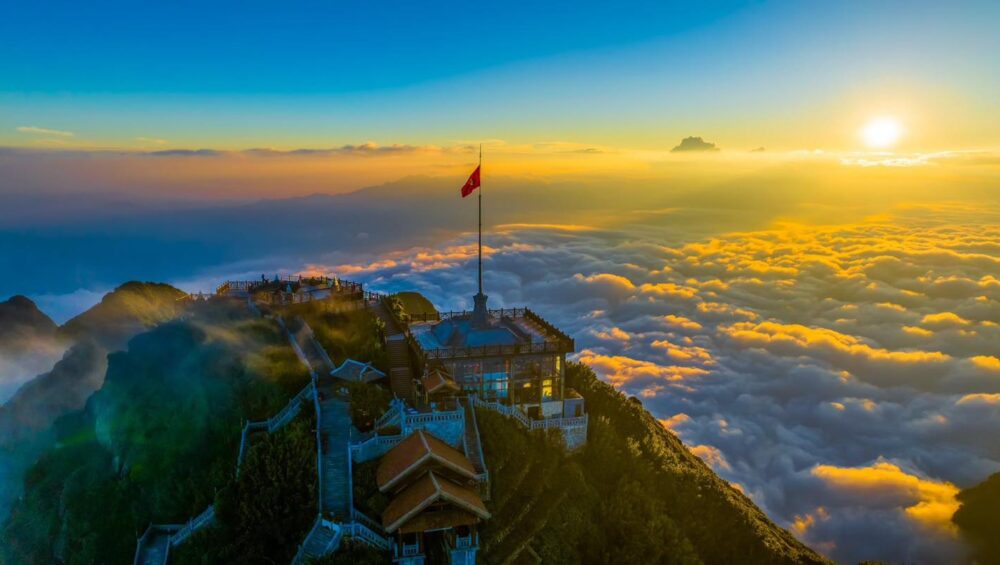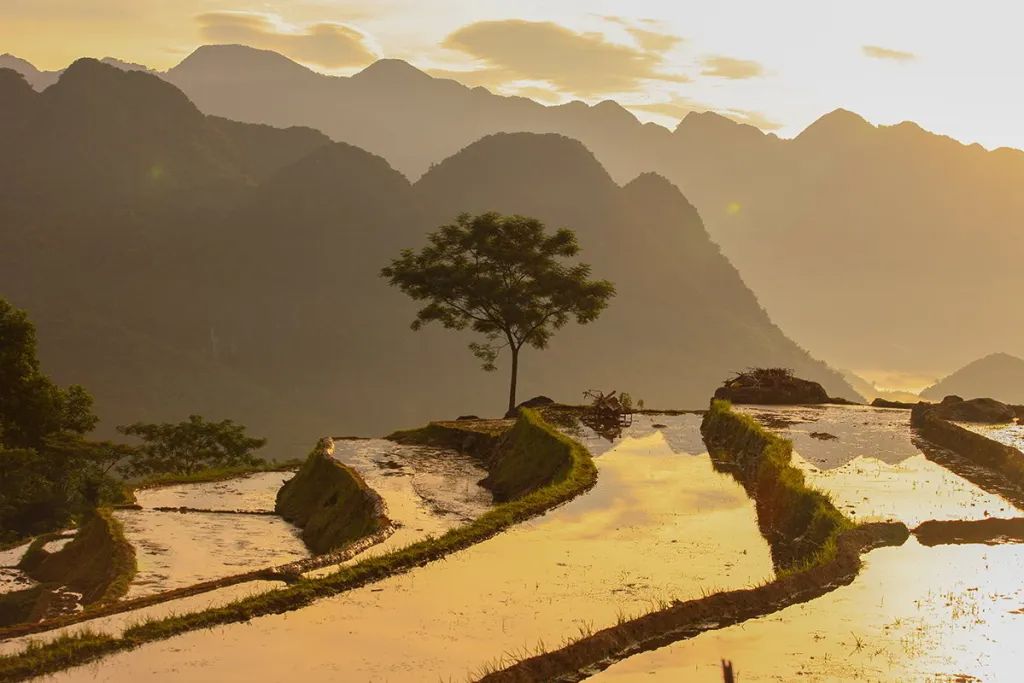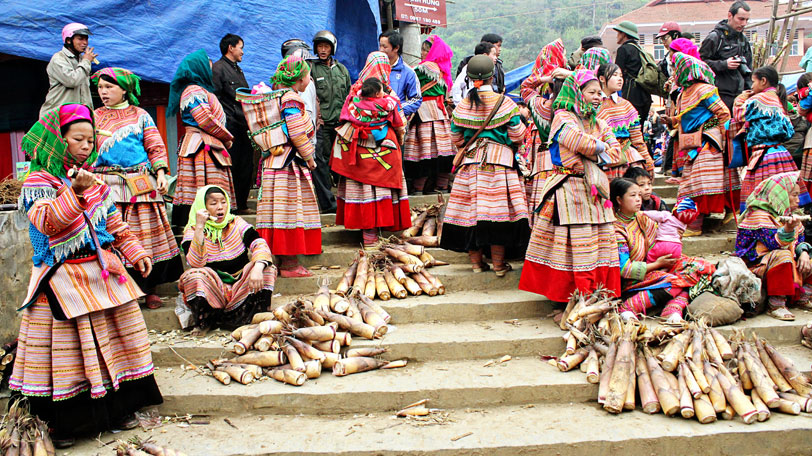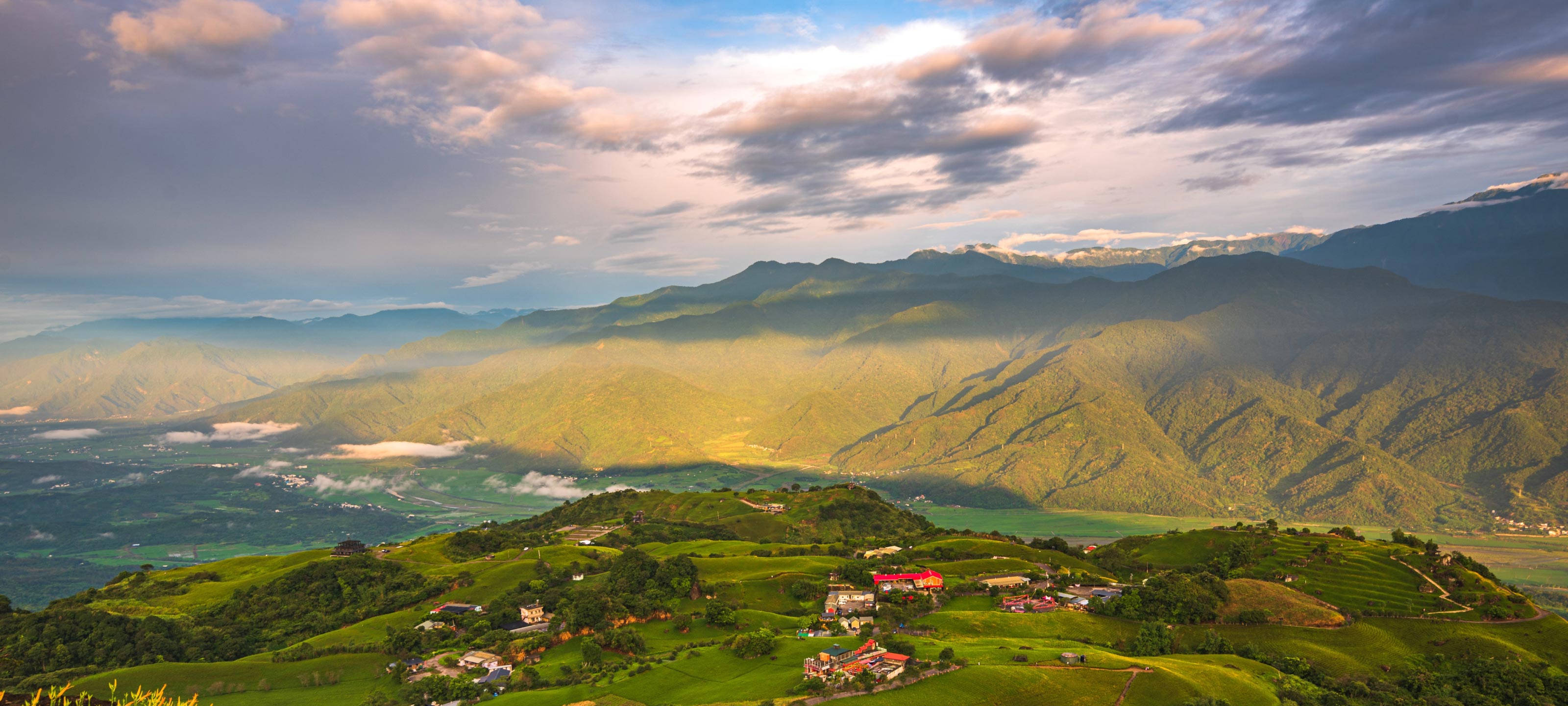With only 4 main colors blue, red, white, black or silk thread, the outfit's patterns radiate a variety of colors, creating a warm feeling. And today, like other ethnic groups, they have also begun to combine ethnic costumes with modern clothes like the Kinh people to facilitate daily living and production.
The H'Mong ethnic group is distributed throughout the mountainous provinces of Northern Vietnam: Quang Ninh, Lang Son, Bac Kan, Cao Bang, Ha Giang, Tuyen Quang, Yen Bai, Lao Cai, Lai Chau, Dien Bien, Son La, Hoa Binh, Thanh Hoa, Nghe An and a few in Phu Tho. The H'Mong people are classified into 4 types, but their traditional culture and language are the same, and only differ in clothing: White H'Mong, Black H'Mong, Red H'Mong, Green H'Mong. H'Mong people's clothes are mainly made from self-woven fabrics, imbued with ethnic characteristics in shaping and decorating with diverse techniques. With only 4 main colors blue, red, white, black or silk thread, the outfit's patterns radiate a variety of colors, creating a warm feeling. And today, like other ethnic groups, they have also begun to combine ethnic costumes with modern clothes like the Kinh people to facilitate daily living and production.
According to the 2009 Population and Housing Census, the total number of H'Mong ethnic people living in Vietnam is 1,068,189 people, ranking 8th in the list of ethnic groups in Vietnam.
Residence: The Mong ethnic group is concentrated in the highlands of the provinces of Ha Giang, Tuyen Quang, Lao Cai, Yen Bai, Lai Chau, Son La, Cao Bang, Nghe An.
Economy: The main source of livelihood of the H'mong ethnic people is shifting cultivation, growing corn, rice, and in some places there are terraced fields.
Black Hmong
WOMEN’S CLOTHES
H'Mong women often wear four-piece shirts, with chest slits without buttons, and the hem is not sewn or tucked into the skirt. The skirt is a closed skirt, with many folds, wide, and when flared out, it has a circular shape. The skirt is worn on the body with a decorative embroidered fabric belt in the middle. When wearing a dress, you usually bring an apron. The apron worn in front of the abdomen covering the legs is an ‘interference’ between a triangular and rectangular piece of fabric; The decorative pattern is an isosceles triangle-shaped piece of fabric on top, the rectangular piece is black indigo, the size depends on the H'Mong people. Women often wear long hair wrapped around their heads, and some groups wear scarves wrapped high on their heads. Jewelry includes earrings, necklaces, bracelets, anklets, rings.
MEN'S COSTUME
Men’s clothing usually wears short blouses at or below the waist, narrow body, and slightly wide sleeves. There are two types of men's shirts: five-body and four-body. Men’s pants are very loose legged compared to other ethnic groups in the area. The head is often covered with a scarf, some groups wear hats surrounded by silver circles engraved with patterns, sometimes they wear antique silver bracelets, sometimes they don't wear them.

